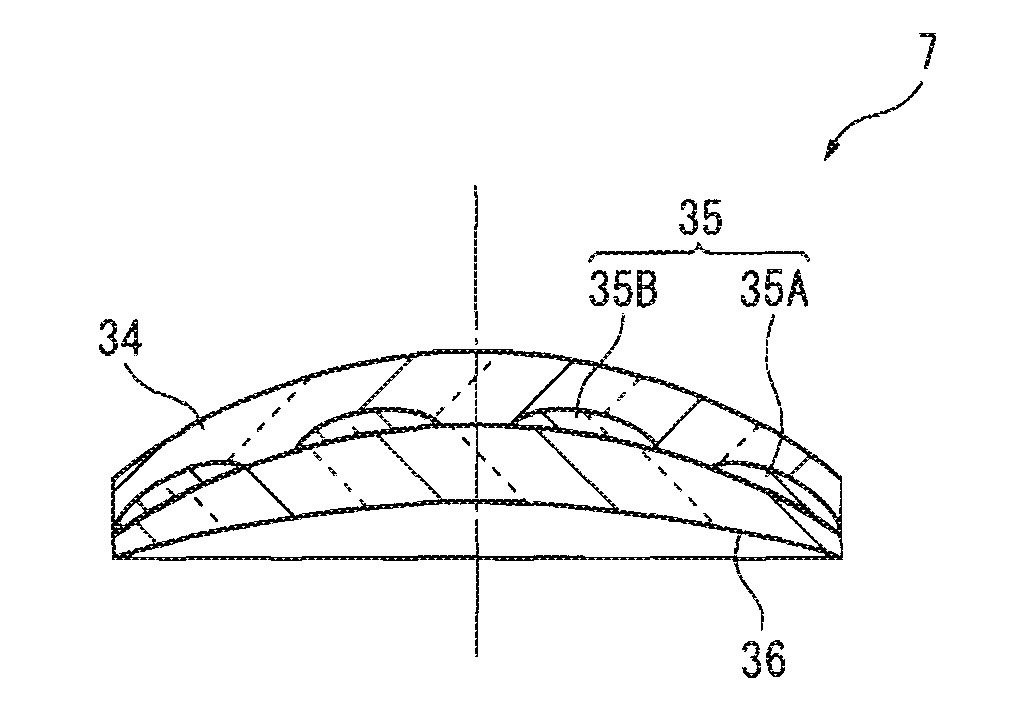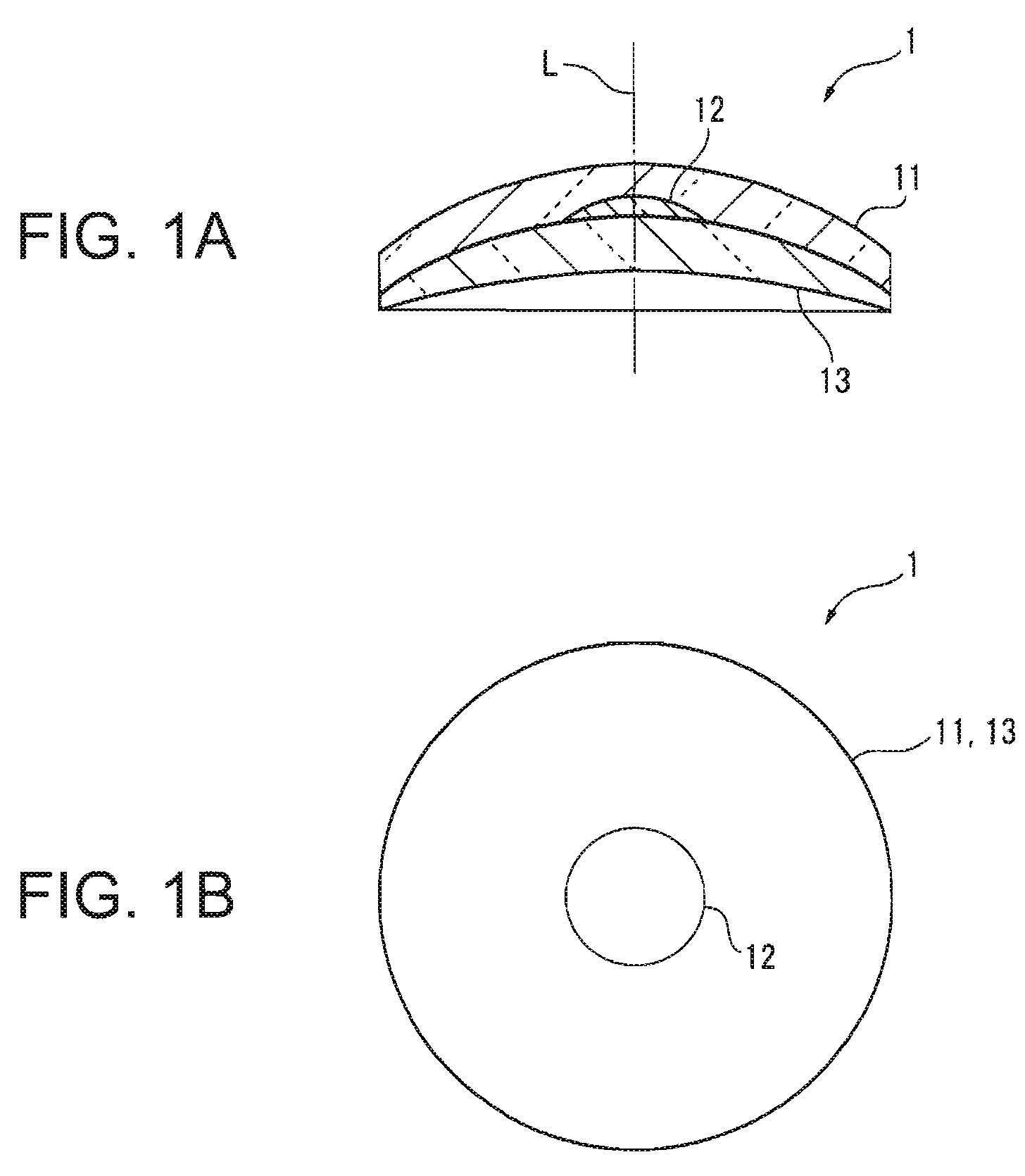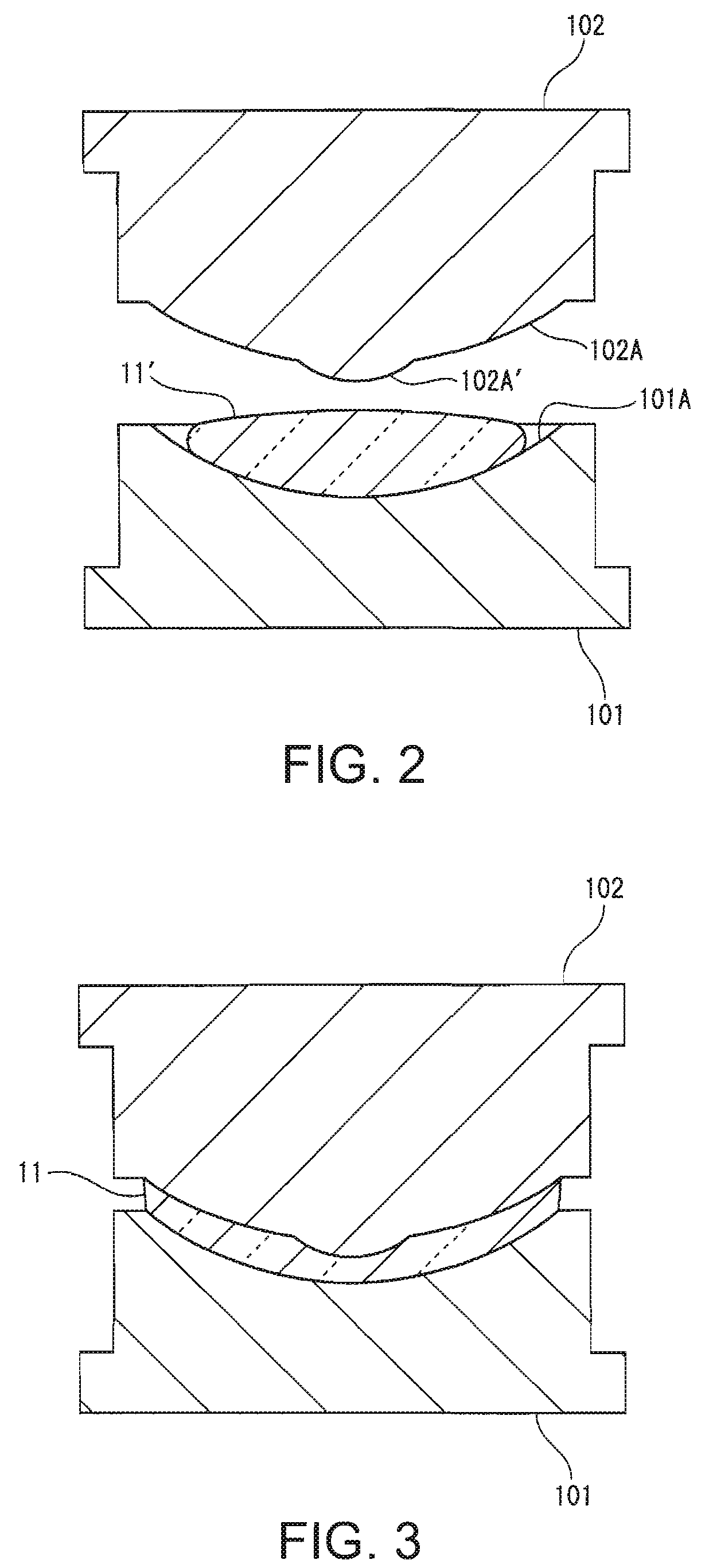Method of manufacturing multifocal lens and multifocal lens
a manufacturing method and lens technology, applied in the field of multi-focal lenses, can solve the problems of high manufacturing cost, difficult to polish optical surfaces, and difficult to align the optical axes of two kinds of lenses, and achieve the effects of reducing interface damage, superior optical characteristic, and stable optical characteristi
- Summary
- Abstract
- Description
- Claims
- Application Information
AI Technical Summary
Benefits of technology
Problems solved by technology
Method used
Image
Examples
embodiment 1
[0086]FIG. 1 to FIG. 7 show Embodiment 1 of the invention. Embodiment 1 is a multifocal lens 1 having a structure in which one group includes three layers.
[0087]FIG. 1 shows the multifocal lens 1 of Embodiment 1. This multifocal lens 1 is structured, as show n in the cross-sectional view of FIG. 1(A), a to have a layered structure including from the convex face side, the first lens 11 having a glass deformation point temperature At1 (hereinafter may be simply referred to as “lens 11”), the second lens 12 having a glass deformation point temperature At2 (hereinafter may be simply referred to as “lens 12”), and the third lens 13 having a glass deformation point temperature At3 (hereinafter may be simply referred to as “lens 13”). Here, the above-described glass deformation point temperatures At1, At2, and At3 have a relation of At1>At2>At3. The respective lenses have glass transition temperatures for which a relation of Tg1>Tg2>Tg3 is established and relations of Tg1>At2 and Tg2>At3 a...
embodiment 2
[0115]Next, Embodiment 2 of the invention will be described with reference to FIGS. 8(A) and 8(B) and FIG. 9. Embodiment 2 has the same structure as that of Embodiment 1 except for that the number and lay-out of lenses positioned at an intermediate position.
[0116]As shown in FIGS. 8(A) and 8(B), a multifocal lens 2 having a structure in which one group includes three layers of Embodiment 2 is composed of three layers of a lens 21, a lens 22, and a lens 23. The lens 22 positioned at an intermediate position is positioned so as to be dislocated from the optical axes of the lenses 21 and 23. Although Embodiment 2 arranges the four lenses 22 on a concentric circle around the optical axis as shown in FIG. 8(B), the lenses 22 are not always required to be on the concentric circle and an arbitrary number of lenses 22 also can be arranged at arbitrary positions in accordance with the optical characteristic of the multifocal lens 2.
[0117]The multifocal lens 2 as described above also can be m...
embodiment 3
[0119]Next, Embodiment 3 of the invention will be described with reference to FIGS. 10(A) and 10(B) and FIGS. 11(A) and 11(B). Embodiment 3 has the same structure as that of Embodiment 1 except for the shape of the lens at the intermediate position.
[0120]In a multifocal lens 3 of Embodiment 3 shown in FIGS. 10(A) and 10(B), a lens 32 positioned at an intermediate position has a doughnut-like shape having no center part. The multifocal lens 3 as described above also can be manufactured by the above-described manufacture method.
[0121]Specifically, as shown in FIGS. 11(A) and 11(B), the first lens 31 having the highest glass deformation point temperature is firstly formed. The first lens 31 includes a concave section 31A at a position at which the second lens 32 is placed. The posture of a lower metal mold 301 is controlled so that this concave section 31A faces upward.
[0122]The second lens material 32′ is shaped to have a doughnut-like disk having no center part as shown in FIGS. 11(A...
PUM
 Login to View More
Login to View More Abstract
Description
Claims
Application Information
 Login to View More
Login to View More - R&D
- Intellectual Property
- Life Sciences
- Materials
- Tech Scout
- Unparalleled Data Quality
- Higher Quality Content
- 60% Fewer Hallucinations
Browse by: Latest US Patents, China's latest patents, Technical Efficacy Thesaurus, Application Domain, Technology Topic, Popular Technical Reports.
© 2025 PatSnap. All rights reserved.Legal|Privacy policy|Modern Slavery Act Transparency Statement|Sitemap|About US| Contact US: help@patsnap.com



